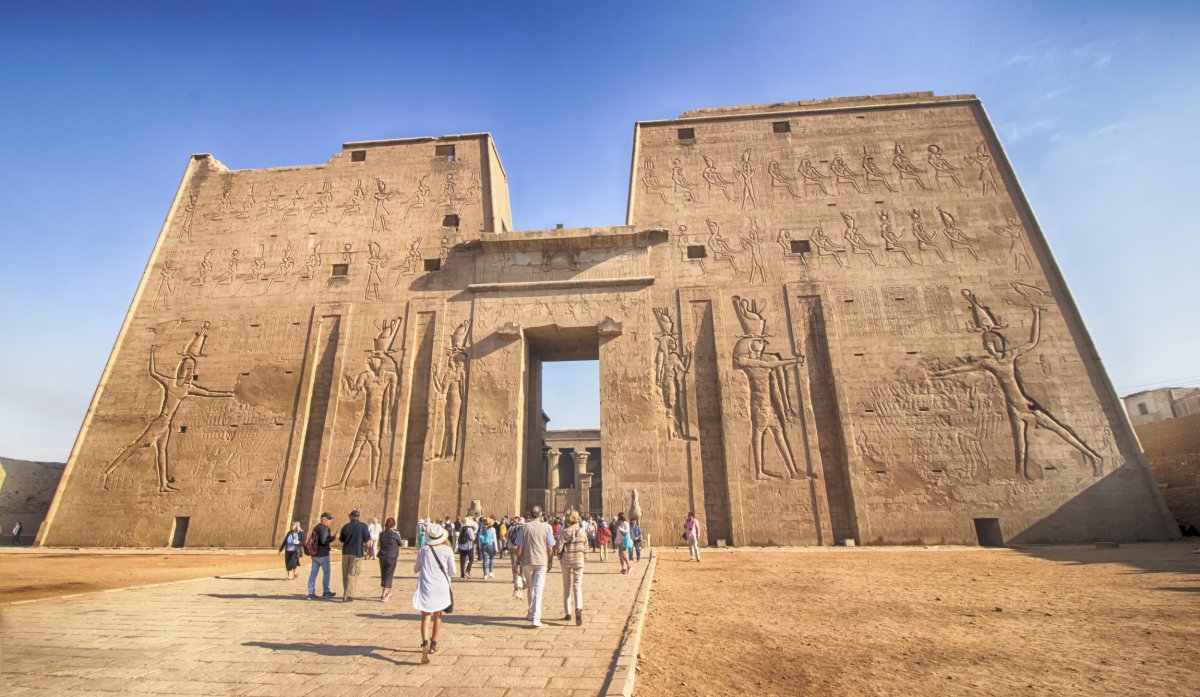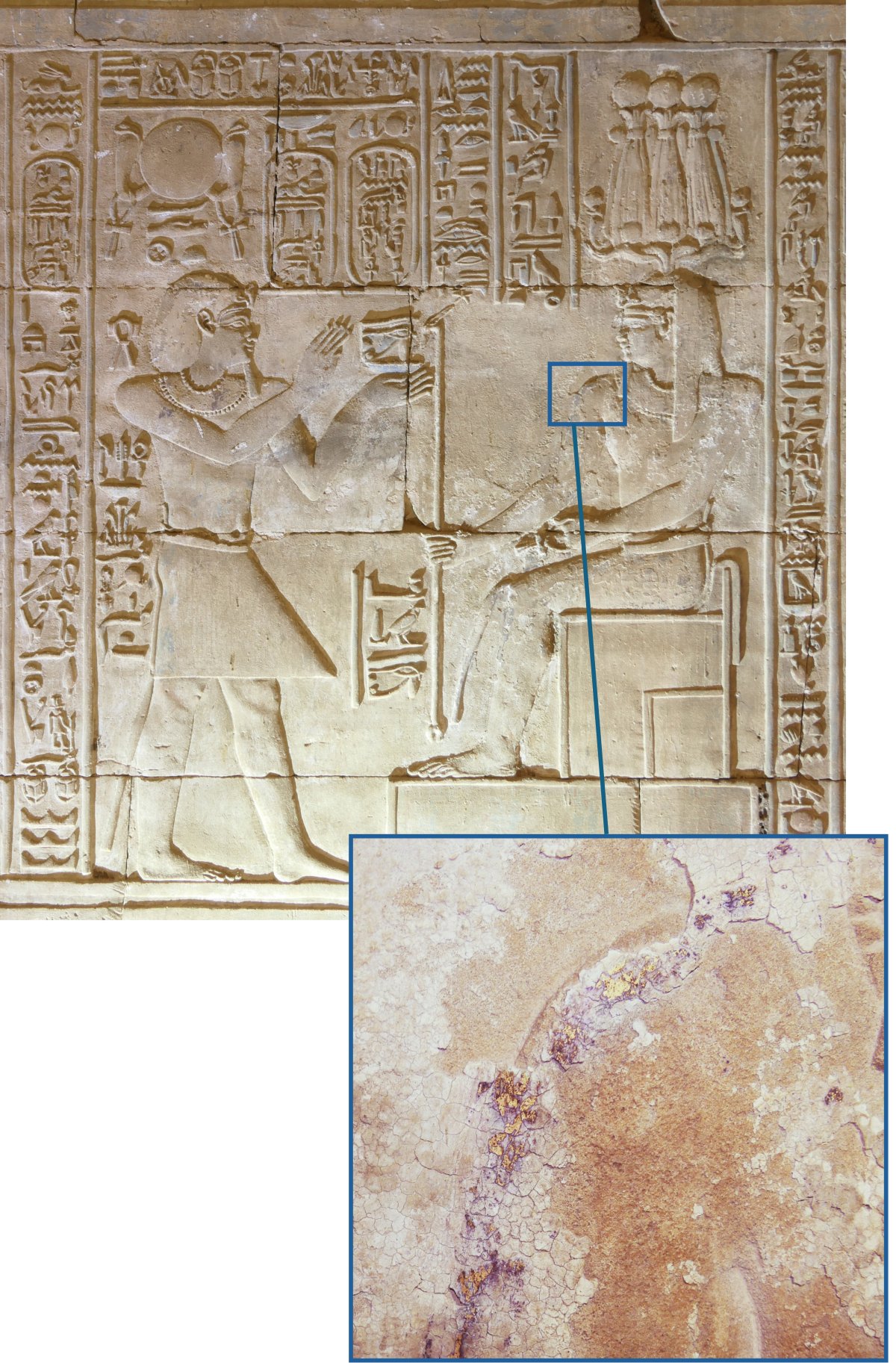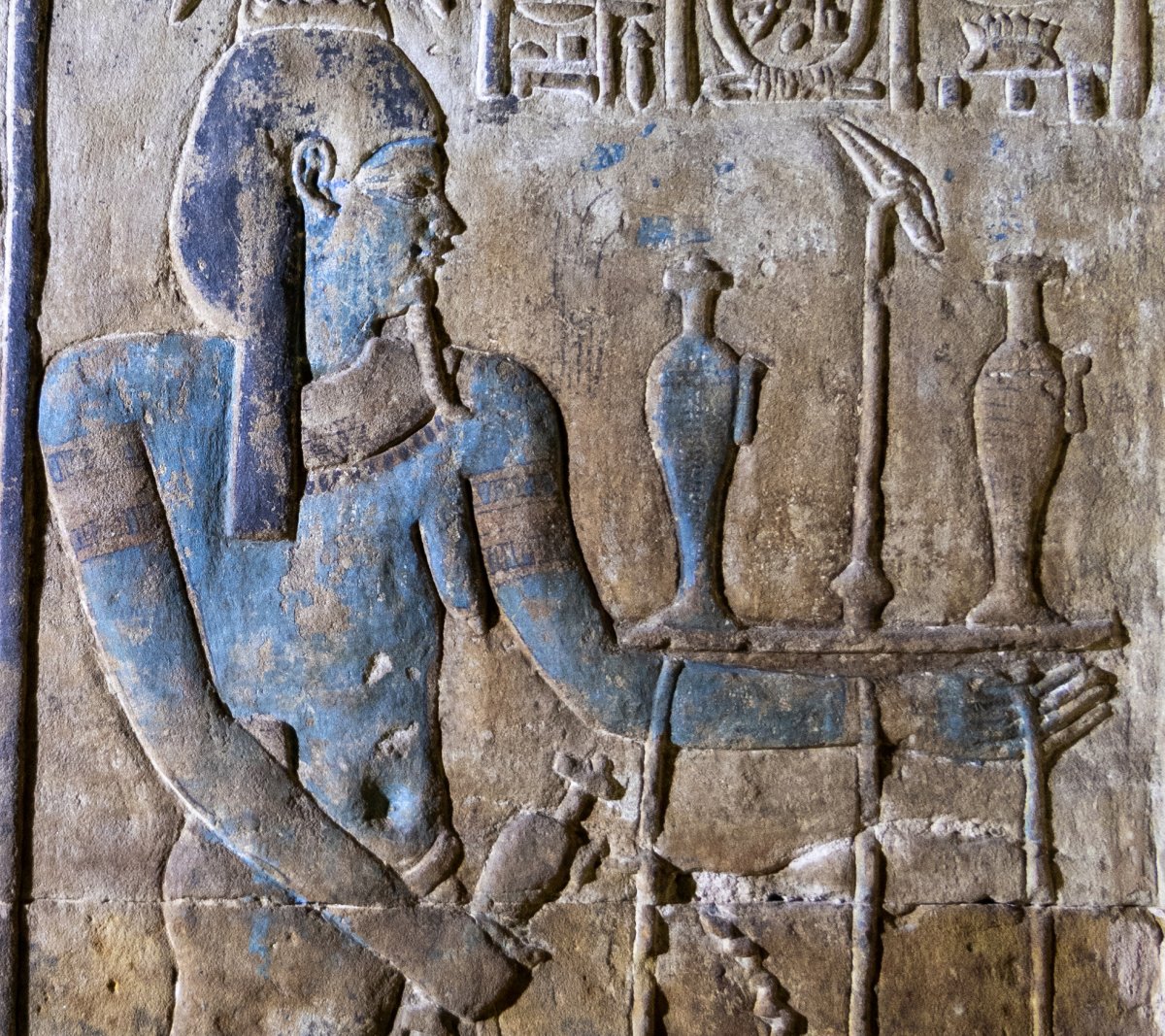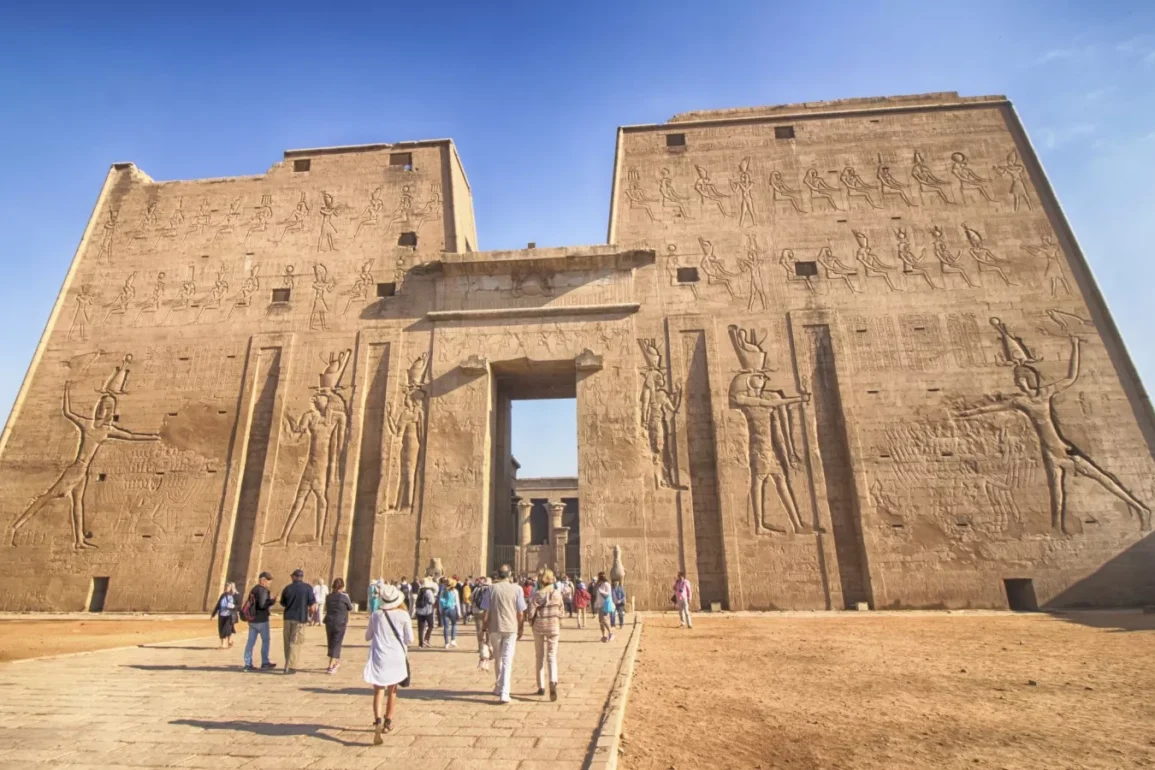Restoration work at a magnificent ancient Egyptian temple has revealed tantalizing insights into its original appearance and coloration.
Alongside ongoing restoration efforts at the Temple of Edfu, a team of researchers from the Julius Maximilian University of Würzburg, Germany, uncovered rare traces of gold leaf and remnants of colorful paintings, as well as ancient graffiti, within the building.
The temple, on the west bank of the Nile, is considered to be the best-preserved sanctuary of ancient Egypt. Dedicated to the sky god Horus, the temple was built and decorated over the course of 180 years between 237 and 57 B.C. during a period when Egypt was ruled by a Hellenistic royal house known as the Ptolemaic dynasty, which originated from the ancient Kingdom of Macedon.
A marvel of ancient engineering, the temple measures around 450 feet in length, roughly 250 feet wide and up to about 115 feet in height. Its surface is completely covered with hieroglyphic inscriptions and pictorial reliefs, featuring numerous religious texts and ritual scenes. In antiquity the temple was located at the center of a regional capital, comparable to a medieval cathedral, but also served as a hub of learning and higher education.

The ancient Temple of Edfu, located on the west bank of the Nile in Egypt. Restoration works at the temple are helping to shed new light on its original appearance.
Edith Polverini/iStock/Getty Images Plus
“Today the temple’s importance is that it is almost completely preserved,” Martin Stadler, chair of Egyptology at the University of Würzburg who is leading the Horus Beḥedety research project at the temple, told Newsweek. “The Temple of Horus at Edfu is considered the icon of a typical Egyptian temple and part of any sightseeing tour in Egypt.”
Stadler and colleagues have been working together with Egyptian restorers from the country’s Ministry of Tourism and Antiquities. These restoration efforts have involved cleaning off the reliefs that were covered with dust, bird droppings and other dirt that has accumulated since the temple’s excavation in 1860.
This work enabled the researchers to document the traces of gold leaf, colorful painting remnants and graffiti in certain parts of the temple.
“The coloration of the Horus-Temple of Edfu has never been subject of Egyptological study and is still largely unknown today. Therefore, we are missing an important facet of the temple needed to fully understand it,” Stadler said.
The researcher said the complex system of inscriptions and pictorial reliefs that cover the walls of the structure intertwine to make the temple what it is: an “image of the cosmos” according to Egyptian ideals.
“The coloration of these reliefs plays a central role here, but is currently beyond our grasp because, above all, dirt conceals it. The aim of restoration is to uncover and research this source of information, which is essential for ancient Egyptian iconography, in Edfu,” Stadler said.
Research over the last two decades has challenged the traditional image of antiquity—characterized by pure white statues and temples—revealing the multicolored nature of many ancient sculptures and buildings.
“The rediscovery of the multicolored temples of Egypt will revolutionize the impression of the sanctuaries, which currently appear mostly as brownish-beige monoliths that hardly stand out against the background of the desert landscape,” Stadler said.

Image showing an ancient Egyptian deity in the Temple of Edfu. Traces of gold leaf decoration on the deity’s shoulder can be seen in the magnified portion.
Horus Beḥedety Project, University of Würzburg
“The details and patterns thus uncovered would give a completely different impression, bright and vibrant, and would reflect the builders’ original intention of creating a representation of the cosmos from the plants on the ground up to the star-covered ceiling.”
Previous research has indicated that ancient Egyptian temples were not only colorful, but gleamed in glistening gold. Since the beginning of the Pharaonic Era—which lasted from around 3100 B.C. until Alexander the Great conquered Egypt in 323 B.C.—architectural elements including columns, gates and obelisks appear to have been covered in gold. Textual sources also indicate that some buildings were gilded.
But gold leaf decorations are only rarely preserved and documented. This can, in part, be explained by the extremely fragile nature of the material—in many cases, such decoration has decayed without leaving any trace. In some cases, the gold leaf was also deliberately removed because of its value, Victoria Altmann-Wendling, project manager and research fellow of the Horus Beḥedety Project at Würzburg, told Newsweek.
Now though, Würzburg researchers have uncovered traces of such gold leaf decoration in several locations on the higher wall areas in one of the temple’s central rooms, known as the barque sanctuary—for example, on the shoulder of a deity’s depiction.
“The gilding of the figures presumably not only served to symbolically immortalize and deify them but also contributed to the mystical aura of the room. It must have been very impressive, especially when the sunlight was shining in,” Altmann-Wendling said in a news release.

An example of colorful painting on one of the temple’s reliefs following restoration. Ancient Egyptian paintings such as this are rarely preserved.
Martin Stadler/Horus Beḥedety Project, University of Würzburg
The researchers also uncovered the remains of colorful paintwork that once covered the temple’s reliefs. In most ancient Egyptian temples, painting is not preserved at all. When it is found, it tends to be limited to only a few—usually interior—areas.
“Revealing the temple’s polychromy helps us to understand better the iconography of the reliefs and hieroglyphic inscriptions that fully cover the walls. Thus, restoration is for Egyptologists not just a matter of aesthetics but a sort of micro-excavation that reveals further information on the ancient Egyptian picture language,” Stadler said in the news release.
Another recent find was the discovery of “dipinti”—graffiti painted in ink—that was written in the ancient Egyptian Demotic script, which was common at the time the temple was built. Writing hieroglyphs in everyday life was too complicated, so the ancient Egyptians also developed a cursive script, initially one called Hieratic, then from the 7th century B.C. onward, Demotic came into use.
Perhaps only 10 percent of the population knew how to write the Demotic script. The graffiti, therefore, was made by literate people, presumably priests, because only priests were allowed to enter the area where they were found. The graffiti include prayers addressed to Horus, providing new insights into the beliefs and cult practices of the priests who made them.
Do you have a tip on a science story that Newsweek should be covering? Do you have a question about archaeology? Let us know via science@newsweek.com.
This post was originally published on this site be sure to check out more of their content.








